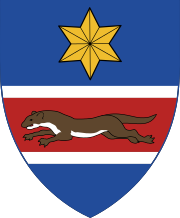I was reading about Battle of Mohi between the Mongol Empire and the Kingdom of Hungary.
Wikipedia contains this artistic depiction of the battle:
The cavalry on left hand looks like Mongols while presence of Knights on right hand side means those are the Magyar. You will notice the banner carried by knights contains a white crescent on a red plain field.
I know the crescent was not originally associated with Islam or Muslim Empires in the East, and might actually have been adopted by them from Byzantines who were neighbors of Hungarians. But by the time Battle of Mohi took place, crescent was firmly associated with Muslims and linked to Muslims since the Crusades.
I have tried googling it but the results are mostly about Hungarian confrontations with the Ottoman Empire due to keywords "Hungarian" & "Crescent" (thanks a lot Murad II & John Hunyadi). One lead me to a book, but it only refers to a crescent formation used by both sides in the Battle of Mohi.
Anyhow, why are the Hungarian Knights depicted in this picture holding a crescent banner? Did Hungarians ever go to battle bearing crescent banners in the medieval era?
Wikipedia states however that this artwork is an anonymous illustration, so authenticity of said image might be in question. But by putting the image through Google Image search, it seems this image is used to illustrate the battle in question by a lot of sources.






